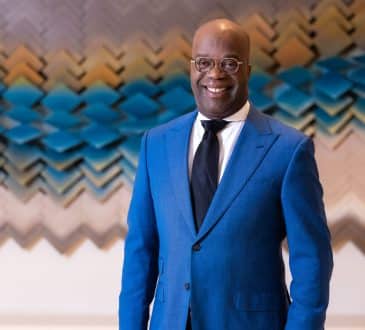Post-Covid-19’s Impact on Employees’ Sense of Purpose

According to a recent article by McKinsey & Company, nearly two-thirds of U.S.-based employees reported that the recent COVID-19 pandemic has caused them to reflect on their purpose, that is, the “enduring, overarching sense of what matters most in a person’s life.” Seventy percent of employees said that their sense of purpose is defined by their work, and over sixty percent indicated that they wanted to get more purpose from their work.
In my 25 years of working with thousands of companies I have found four key strategies that any company can take to help increase the sense of purpose all employees experience and better links them to the pride they have in their company and their work:
1) Create a clear and compelling mission and vision,
2) Build out the company’s purpose in your employee orientation,
3) Embed purpose into your ongoing work processes,
4) Systematically reinforce your mission on a daily basis.
I’ll expand on each strategy in this article.
Create a Clear & Compelling Mission & Vision
To provide a larger perspective and context for employee purpose it’s important to provide employees a clear and compelling vision of the organization as told through its strategy and mission. If employees don’t know—or aren’t inspired by—what the organization is trying to do, they’ll find it more difficult to summon up the motivation to succeed. Frances Hesselbein, president of the Leader to Leader Institute, once put it this way: “No matter what business you’re in, everyone in the organization needs to know why.”
Clarifying one’s vision is a useful starting point for deciding what is most important for the organization—and its employees—to focus on to be successful. And the result needs to be a compelling purpose that can inspire everyone. “A vision is not just a picture of what could be, it is an appeal to our better selves, a call to become something more,” says Harvard professor Rosabeth Moss Kanter.
The vision and mission then needs to be translated in ways every employee can impact. For example, at British retailer Marks & Spencer, each business area writes its commitments on a poster, which is then displayed publicly. This way commitments are visible to all and become a way of working, rather than an action plan that is put in a drawer.
Build out the Company’s Purpose in Your Employee Orientation
Use your company orientation to ground your new employees in the world they just joined. Have the CEO or upper managers address the group and give their back story. For example, at MailChimp they immerse new hires in a comprehensive orientation program run by the organization’s Chief Cultural Officer to ensure new employees clearly understand the company mission, strategy, and values. New employees are given company “swag,” cheered by their new co-workers, and introduced to representatives from each department to understand how everything, and everyone, works together.
Pivotal to new employees internalizing the customer-first culture is when they join the research team for a “Customer Chat” to learn the needs and challenges of customers. They learn the same MailChimp app that customers use. No matter the level or area where the person will be working, they end their first week with a strong understanding of what the company stands for, and what their individual role is in satisfying the customer’s needs.
Embed Purpose into Your Ongoing Work Processes
The third strategy for increasing employee purpose is to embed it into ongoing work processes. For example, “Each quarter, every quarter, at The Granite Group, based in Concord, New Hampshire, the CEO, COO and Chairman visit every one of our 34 locations for a Quarterly Meeting,” reports Tracie Sponenberg, Senior VP of Human Resources. “These meetings are focused on financial metrics and strategy. Every one of our team members, from truck drivers to managers, attends and is updated on company performance, branch performance, and progress with our strategy.
You can ask any of our employees what the main strategic focus of our company is—and they will know. Our locations also share daily sales information with their team, so everyone knows how the location is performing, and can understand their impact on their location, and the organization.”
Systematically Reinforce Your Mission on a Daily Basis
To sustain an organization’s mission and purpose, you need to systematically reinforce its principles and practices on a daily basis. Recognition and positive feedback are fundamental drivers for creating a company culture where employees feel proud of their work and the mission of their company. Companies who are serious about doing recognition right typically invest in a software platform that integrates and aligns individual, group and organization recognition around mission, strategic objectives and core values of the company.
I saw the impact of doing this recently when I helped Qualcomm, leaders in 5G technology, with 45,000 employees based in 45 countries worldwide integrate a new recognition software platform and app called WorkProud© (www.workproud.com). With that, recognition for efforts toward mission-driven projects and directives, core values, and targeted performance became commonplace.
In just the first year, 85 percent of leaders and employees participated in the program and 100 percent of employees received recognition from their peers, managers or executives of the firm. Since the app was mobile-friendly, even busy executives could quickly scan public recognitions received by their employees between meetings and “like,” comment, or add a financial incentive to the deserving employees. WorkProud©’s tag line, “Proud of Your Work, Proud of Your Company,” became the reality for Qualcomm employees worldwide.
Do the four strategies described in this article and you’ll be well on your way to having employees fulfilling more of their purpose at work.
# # #
Written by Dr. Bob Nelson.
Add CEOWORLD magazine to your Google News feed.
Follow CEOWORLD magazine headlines on: Google News, LinkedIn, Twitter, and Facebook.
This report/news/ranking/statistics has been prepared only for general guidance on matters of interest and does not constitute professional advice. You should not act upon the information contained in this publication without obtaining specific professional advice. No representation or warranty (express or implied) is given as to the accuracy or completeness of the information contained in this publication, and, to the extent permitted by law, CEOWORLD magazine does not accept or assume any liability, responsibility or duty of care for any consequences of you or anyone else acting, or refraining to act, in reliance on the information contained in this publication or for any decision based on it.
Copyright 2024 The CEOWORLD magazine. All rights reserved. This material (and any extract from it) must not be copied, redistributed or placed on any website, without CEOWORLD magazine' prior written consent. For media queries, please contact: info@ceoworld.biz
SUBSCRIBE NEWSLETTER








